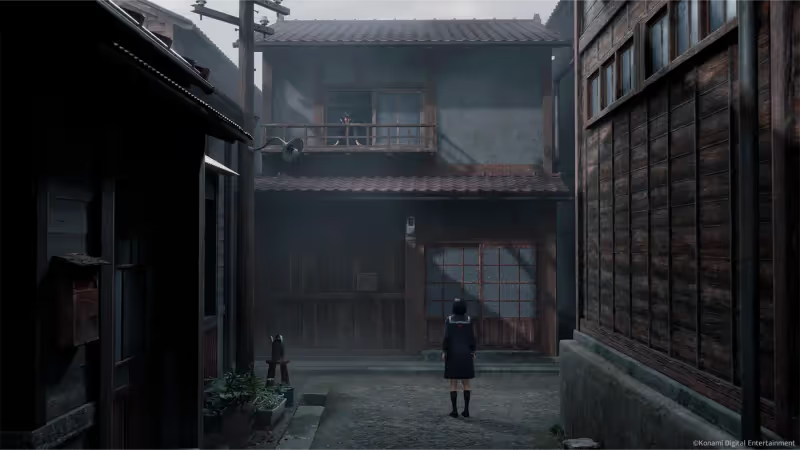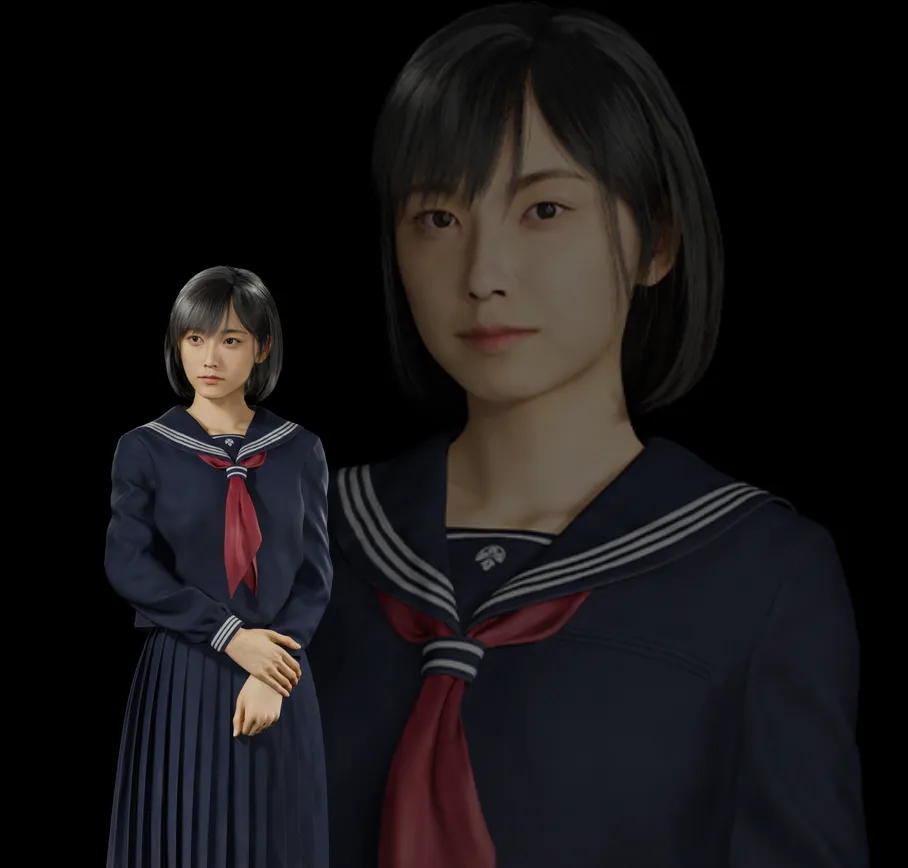
While lurking around the official sites of Silent Hill f, we've noticed that there are new insights about its haunting world and specifically, the terrifying creatures & characters that inhabit it. The latest trailer also showcased a chilling glimpse into the game's monster lineup, one that has already left fans intrigued. Here's everything we know about the upcoming characters in Silent Hill f.
Table of Contents
Advertisement
Protagonist and Key Characters in Silent Hill f
Here are the important characters in Silent Hill f. The information we used has been taken from the official website of the game.
Shimizu Hinako
"The game's main character.
A teenage girl struggling under the pressure of expectations from her friends, family, and society.
Cheerful and energetic as a child, she's grown to become much more restrained, and now hardly smiles."

Iwai Shu
"A childhood friend of Hinako's, they still call each other "partner," just like when they were kids.
Forward-thinking for the time, he doesn't see anything wrong with friendships with the opposite sex, and treats everyone alike.
His family have been physicians for generations, leaving him knowledgable about various medicines and treatments."

Advertisement
Nishida Rinko
"One of Hinako and Shu's friends. Tends to be a stickler for rules, and somewhat of a busybody.
Quick to pick up on the latest rumors and gossip, and well-versed in matters of romance.
Has developed a bit of a crush on Shu."

Igarashi Sakuko
"One of Hinako and Shu's friends, and a dreamy, laid-back, head-in-the-clouds type.
Her family manages the local Shinto shrine, so she helps with some of the ritual duties."

Advertisement
Silent Hill f Monster Names Inspired by Japanese Sound Effects
One of the most striking details about the newly revealed monsters is their names. Upon closer inspection, some of these names appear to derive from Japanese onomatopoeia such is Kashimashi and Ara-abare. Special thanks to the users of the Silent Hill forum for this information.

- Kashimashi is a Japanese term that conveys a sense of noise, liveliness, or commotion. It is commonly linked to the expression “Onna sannin yoreba kashimashii” (女三人寄れば姦しい), which roughly translates to “When three women gather, it becomes noisy.” The word combines the kanji 姦, which can have various meanings on its own, with the suffix "shii" (しい), giving it the specific connotation of being loud or boisterous in this context.

- Ayakashi (アヤカシ) is a Japanese term used to describe a kind of yōkai, or supernatural being, typically seen near or above the surface of water. The word can be interpreted as referring to a “mysterious sea phenomenon.” These entities are often connected with the threshold between the sea and the sky. Though the term carries a mysterious and eerie tone, it does not relate to sound—it signifies something otherworldly or paranormal.

- Oi-omoi is not a conventional or widely recognized expression in Japanese. It appears to be a fusion of two distinct words: "oi" (おーい), a casual shout used to get someone’s attention—similar to calling out “hey!” in English—and "omoi" (重い), which translates to “heavy” and can also convey emotional weight, such as seriousness or sadness. While not an established phrase or onomatopoeia, the combination might be interpreted creatively or symbolically, perhaps as an emotionally charged call or a thematic play on heaviness and attention.
- Together, it may suggest an emotional or burdensome call, but it's not a recognized onomatopoeic word. More likely symbolic or thematic wordplay.

-
Ara-abare is not a standard phrase in Japanese, but it appears to blend two distinct elements with contrasting tones. The first, "ara" (あら), is an interjection commonly used to express surprise, mild concern, or realization—similar to “oh,” “oh dear,” or “oh my” in English. It’s often heard in softer expressions like “ara ara” (あらあら) or “ara maa” (あらまあ), which add nuance or emphasis, typically in a gentle or amused tone.
The second part, "abare" (暴れ), refers to violent or reckless behavior—rampaging, lashing out, or struggling with force. In the context of video games, especially fighting games, "abare" describes aggressive, high-risk moves taken while under pressure, often involving rapid attacks or button mashing in hopes of regaining momentum.
Combined, “ara-abare” could be interpreted as something playful or ironic. Though not a formal term, it might be used creatively to convey chaotic behavior wrapped in an unexpectedly gentle tone.
Advertisement
Spotlight on Kera: The Vision Behind the Creatures
 The person behind these haunting designs is Kera, the artist tasked with creature and character design for Silent Hill f. A dedicated fan of the horror genre, Kera brings a deep understanding of unsettling visuals and emotional tension to the project.
The person behind these haunting designs is Kera, the artist tasked with creature and character design for Silent Hill f. A dedicated fan of the horror genre, Kera brings a deep understanding of unsettling visuals and emotional tension to the project.
I feel like it's been forever since we've had good monster designs in a Silent Hill game. Especially monsters that could be potentially as memorable as Masahiro Ito's designs. Although some of Ito's monsters were relatively tame, eg. numb body, they all had an aesthetics that made them dark, spooky but also just disturbing enough. They weren't "over the top".
With Silent Hill f, We are hoping the creature designs lean more toward that thoughtful approach rather than just aiming to shock for the sake of it. Ito’s monsters weren’t simply created to disturb, they reflected themes and ideas. That’s the kind of design direction I’d love to see again: one where the horror carries symbolic depth.
Curious to see how all designs will look at the end. I have already pre-ordered the game!
Advertisement
Conclusion
Here it is - a complete look at the monsters and characters featured in the upcoming Silent Hill f. Special thanks to the Silent Hill Heaven forum and the official Silent hill f website for some of the information used in this article.
Advertisement









